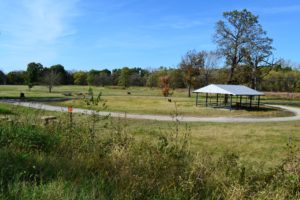
A small group of people is putting together a non-profit 501 (c) (3) called “The Butterfly Weed Club of Southeast Kansas.”
“Our purpose is to restore habitat for the Monarch Butterfly in an effort to slow or reverse its decline,” David Everett, an organizer, said.
Monarch Butterfly populations have been decreasing, according to authorities: https://www.fws.gov/savethemonarch
Everett appeared before the Bourbon County Commission to announce the existence of the group and its’ purpose.
“Susan Bancroft, the finance director for city and county, spoke up and told me there were interested people on the parks commission,” Everett said.
The group is having a meeting this evening
at 7 p.m. at 501 E. Third Street in Fort Scott to view a butterfly garden by the railroad tracks, he said.
Resident Alison Leach has one butterfly habitat restoration project at Gunn Park, he said.
“We want to help with that,” Everett said. “But the area of intense interest to me is the riverfront area at Bridal Veil Park (off of West Second Street). I’ve been evaluating that area in hopes of meeting criteria for Kansas University’s Monarch Watch program.”
Everett has begun documenting existing pollinators and existing butterfly populations, he said.
“I’ve been a gardener for decades and have experienced two Monarch migrations,” he said. Recently I have decided that I can do more than my small-scale efforts, so far, in support of restoring Monarch Habitat. I’ve long been dedicated in my heart to various public service activities.”
“In the early 80’s I saw the Monarch migration twice while living on our family farm,” Everett said. “I first saw them coming and mistook them for a dark storm cloud over the horizon, but when they arrived it was the most amazing thing I’ve ever seen–just thousands of butterflies in every direction for hundreds of yards. During one of these migrations, the Monarchs decided it was time to take a rest and they landed everywhere–carpeting the fields, the trees and bushes, and even landing on me. It’s my hope that everyone can have the opportunity for such an experience, and that’s why we’re doing what we’re doing. It had a very deep spiritual impact on me that I think everyone should have.”
Butterfly populations have been declining, he said.
“The primary cause of the decline is that various species of milkweed are the sole host plant for the Monarch caterpillar,” he said. It eats nothing else. Because milkweed is poisonous to vertebrates, farmers eradicated it without understanding or perhaps caring what they were doing to the Monarchs.”
“This left marginal areas as largely the only possible place for milkweed to grow,” Everett said. “This was still enough habitat for quite some time, but today county and state governments mow and spray roadsides too, and that has left very little habitat for the Monarch, which is becoming quite precious.”
“Our purpose is to restore such habitat, to educate the public, government, and businesses on the matter, and hopefully we will eventually be able to maintain a seed bank as a community resource for appropriate native milkweed and other pollinators,” he said.